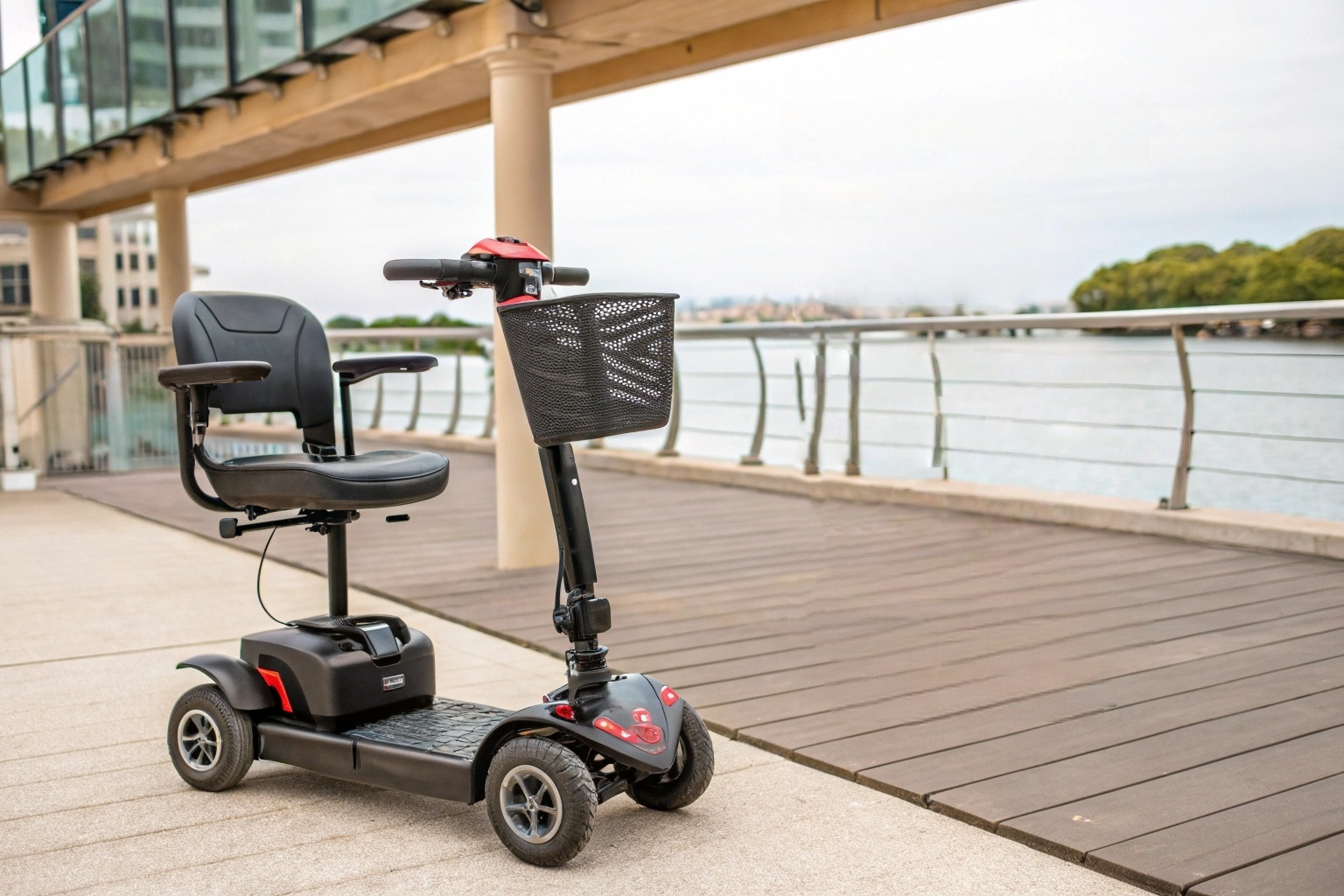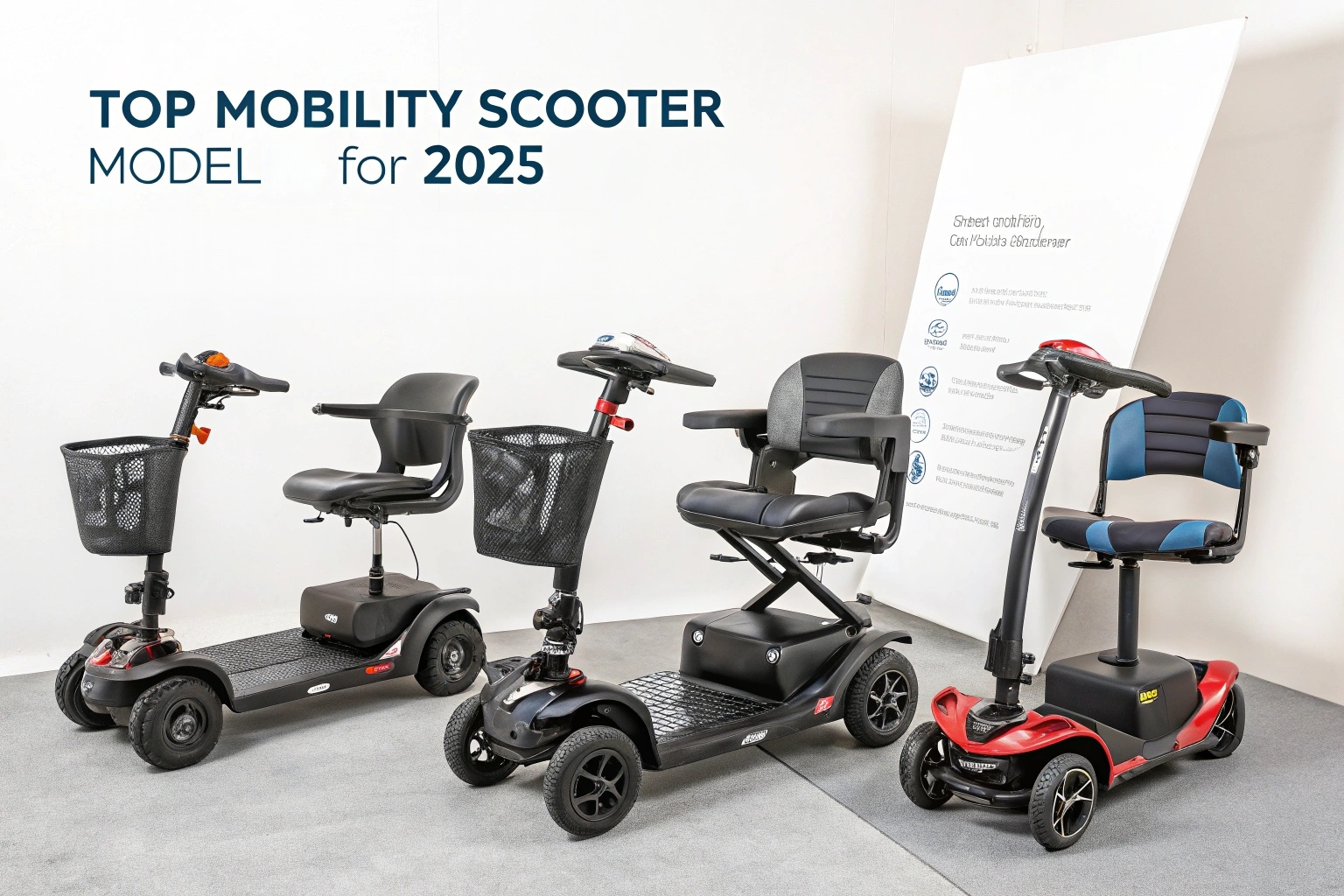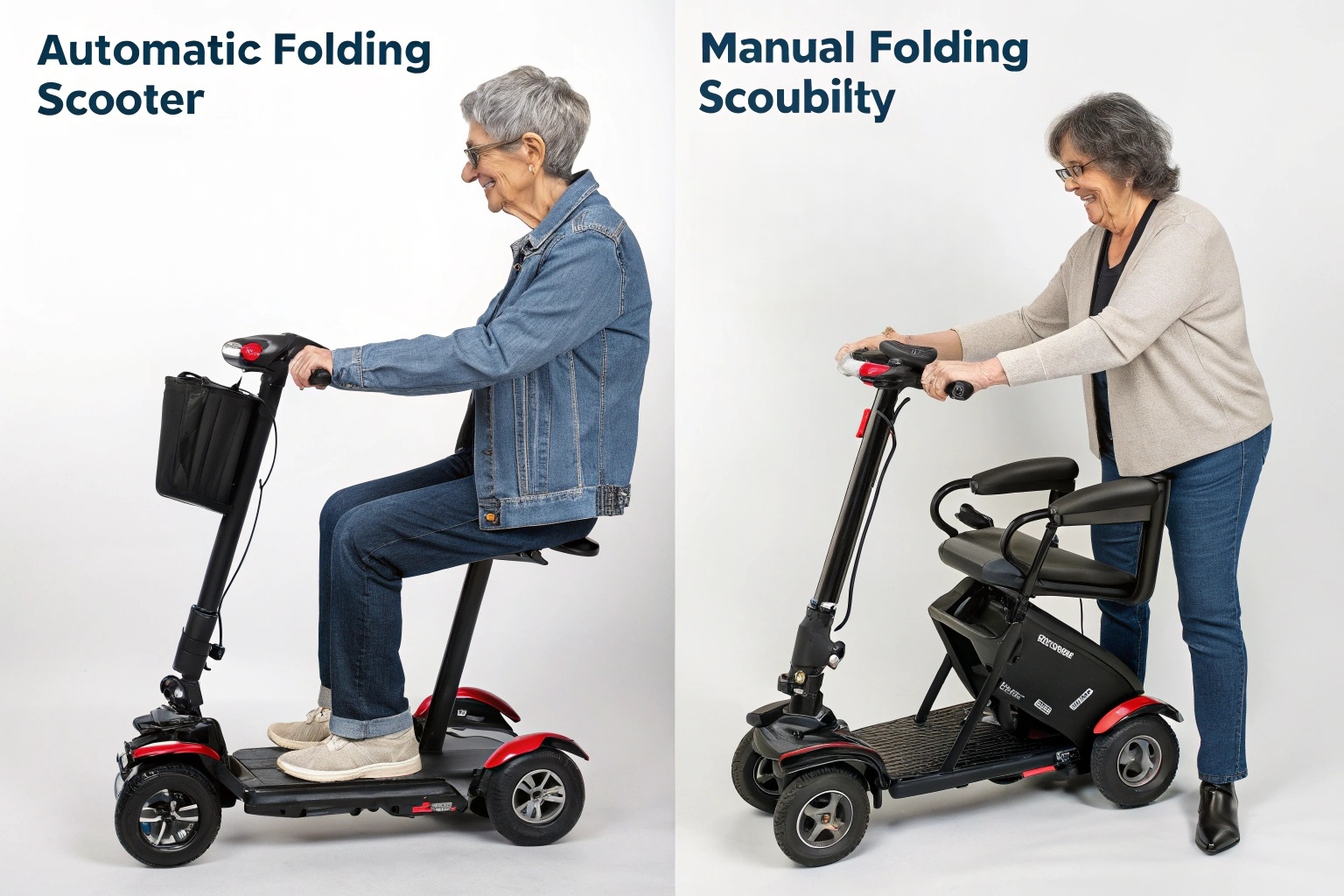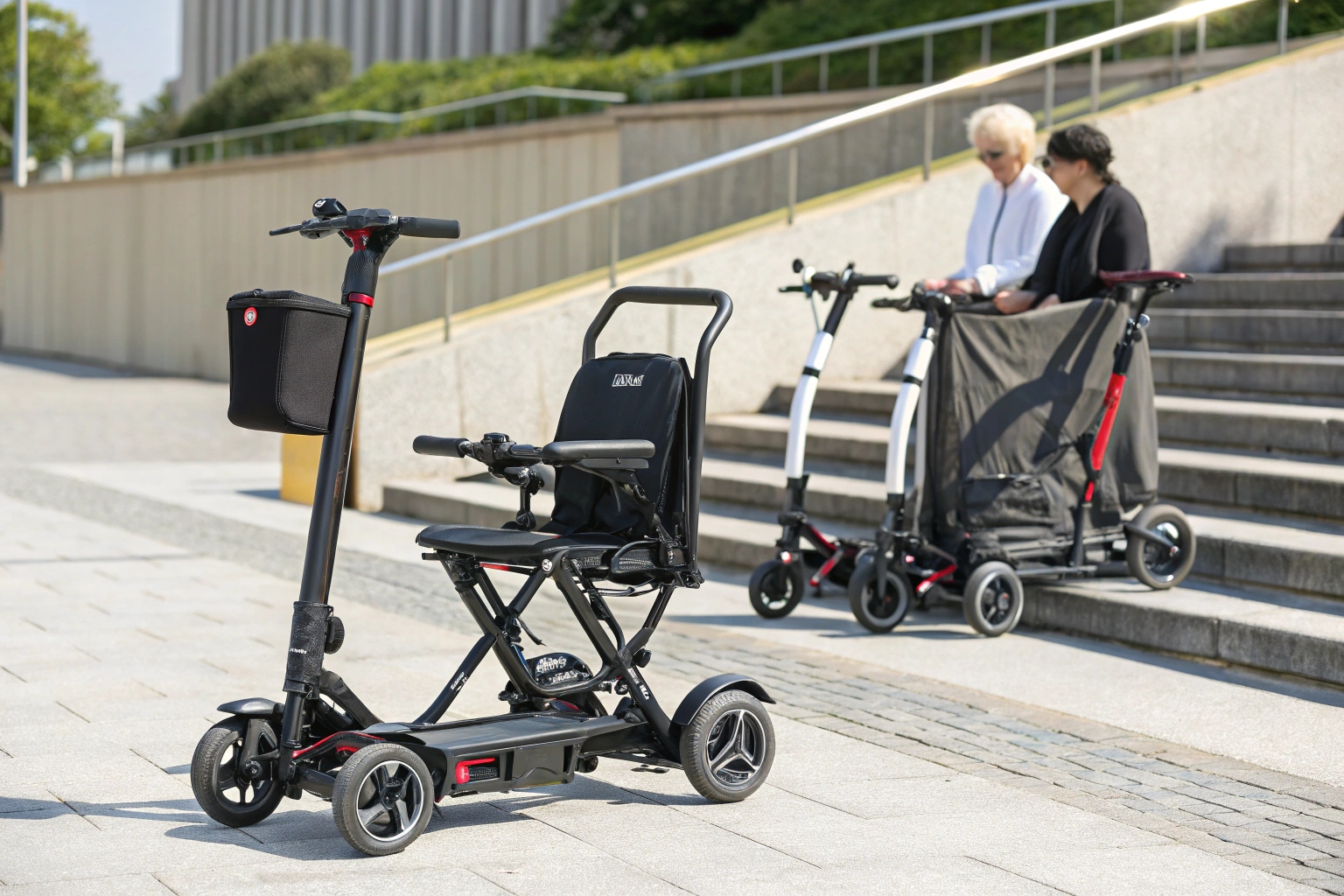Your customers demand portability, but "lightweight" claims are everywhere. Stocking a heavy scooter means lost sales and frustrated buyers who can't lift it into their cars, defeating its purpose.
The lightest folding mobility scooters weigh around 12-15 kg (26-33 lbs). These models use advanced materials like carbon fiber or magnesium alloy for the frame and lightweight, airline-approved lithium batteries to achieve their record-low weights.

This focus on ultra-lightweight design is a major trend in the mobility market. As a manufacturer, I've seen the demand shift dramatically from heavy, durable models to ones that offer true freedom and independence. B2B buyers who understand this trend can gain a significant market advantage. However, sourcing these scooters requires a deeper understanding of the materials, mechanisms, and trade-offs involved. It’s not just about finding the lowest number on a spec sheet; it's about delivering a product that is both light and reliable.
Top 5 ultra-lightweight models mobility scooter in 2025?
Your catalog needs the latest models, but it's hard to know what's truly innovative. Stocking last year's "lightweight" scooter can leave you with outdated, heavier inventory that is difficult to sell.
For 2025, top mobility scooter models will be defined by weights under 18 kg (40 lbs), the use of carbon fiber or magnesium, and smart folding systems. Brands like Solax and ATTO have set benchmarks, but the key is the technology, not just the name.

When importers look for the "best" models, I always advise them to focus on the underlying engineering rather than just the brand names. The top models are not just light; they are smartly designed. As an OEM factory, we help clients build scooters that compete with these top-tier models by focusing on the same core principles. The goal is to provide your customers with a product that delivers on its promise of portability. The most successful importers will source scooters based on these competitive features, allowing them to build their own strong brand reputation.
Here are the categories of models that will define the market:
| Model Category | Key Material | Approx. Weight Range | Folding Mechanism | Best for Target Customer |
|---|---|---|---|---|
| Carbon Fiber Frame | Carbon Fiber | 12-15 kg (26-33 lbs) | Manual | Tech-savvy users who want the absolute lightest |
| Magnesium Alloy Frame | Magnesium Alloy | 14-17 kg (31-37 lbs) | Manual/Auto | Premium market seeking a balance of luxury & low weight |
| Auto-Fold Aluminum | Aircraft-Grade Aluminum | 18-22 kg (40-48 lbs) | Automatic (Remote) | Users with limited strength or mobility |
| Manual-Fold Aluminum | Aircraft-Grade Aluminum | 16-20 kg (35-44 lbs) | Manual | Budget-conscious buyers seeking reliability |
| Travel-Specific | Mixed Materials | 15-19 kg (33-42 lbs) | Manual/Splitting | Frequent travelers who need airline compliance |
Are automatic folding mobility scooters better than manual ones?
Automatic folding looks impressive, but is it worth the extra cost and weight? Choosing the wrong type for your target market can lead to either priced-out customers or complaints about usability.
"Better" depends entirely on the end-user. Automatic folding is superior for users with limited strength or who can't bend over easily. Manual folding is better for those who prioritize the lowest possible weight, reliability, and affordability.

From a manufacturing perspective, the difference is clear. An automatic folding scooter requires a small motor, an actuator, controls, and more complex wiring. This adds weight, increases the manufacturing cost, and introduces more points of potential failure over the long term. A manual scooter is mechanically simpler. It relies on well-designed hinges and latches. For B2B importers, the best strategy is often to offer both. This allows you to capture the premium, convenience-focused market with automatic models while also serving the larger, more price-sensitive market that values simplicity and low weight. It's about giving your distributors and retailers the options they need.
| Feature | Automatic Folding Scooters | Manual Folding Scooters |
|---|---|---|
| Ideal User Profile | Elderly, users with back problems or limited strength | Active, budget-conscious users who can bend and lift easily |
| Weight | Heavier (adds 2-4 kg / 4-9 lbs) due to motor and mechanics | Lighter, as there are no extra electronic components |
| Cost | Higher, due to more complex parts and manufacturing | More affordable and cost-effective |
| Reliability | More components that could fail (motor, remote, electrics) | Extremely reliable with fewer moving parts to break |
| Convenience | Folds/unfolds with the push of a button; highly convenient | Requires physical effort to fold and unfold |
Weight vs. durability: How light is too light?
Everyone wants the lightest scooter, but you worry it will be flimsy. Selling a product that breaks under normal use is a disaster for your brand, leading to returns and negative reviews.
A scooter is "too light" when durability is sacrificed for a lower number on the scale. This happens when thin, low-grade metals are used instead of advanced materials. A reliable lightweight scooter must have a solid frame and a realistic weight capacity (over 100 kg / 220 lbs).

This is one of the most critical conversations I have with my B2B clients. Chasing the "world's lightest" title can be a trap. The real goal is to find the "lightest durable scooter." At my factory, we can engineer a scooter to meet almost any weight specification, but we always guide our partners toward a sustainable balance. We can use premium T700 carbon fiber for a product that is both incredibly light and strong, or a cleverly designed 6061 aircraft-grade aluminum frame that offers excellent durability at a slightly higher weight but lower cost. A scooter is too light if the frame flexes, the wheels feel unstable, or the stated weight capacity seems impossible for the materials used. Your customers' safety and your brand's reputation depend on getting this balance right.
What airline-friendly mobility scooter options are truly portable?
The "airline-friendly" label is used everywhere, but airport rules are strict. Selling a scooter that gets rejected at check-in is a customer service nightmare and a direct path to a product return.
A truly airline-friendly mobility scooter must have a removable lithium-ion battery with a capacity under 300 Wh. The battery must be removed from the scooter and carried into the cabin by the passenger. The scooter itself should also be light and compact.

The battery is the single most important factor for air travel. IATA (International Air Transport Association) regulations are very clear on this. Any scooter with a non-removable battery or a battery over 300 Wh is simply not allowed on passenger aircraft. As an importer, it is your responsibility to ensure the products you source are compliant. When you work with a factory, you must ask for the UN 38.3 test certificate for the lithium battery. This report is proof that the battery has passed safety tests for transportation. We provide this documentation as a standard part of our export process because we know it is non-negotiable for any client who wants to market their scooters for travel.
Airline Portability Checklist for Importers:
- Battery Capacity: Must be under 300 Wh.
- Removable Battery: The design must allow the user to easily remove the battery.
- UN 38.3 Certificate: Demand this test report from your supplier for shipping and customer travel.
- Folded Size & Weight: Must be compact and light enough for the user to handle at the airport and for airline stowage.
Conclusion
Focus on advanced materials, user-friendly folding, and certified airline-friendly batteries. The right choice balances low weight with the real-world durability and reliability that your specific customers demand.

